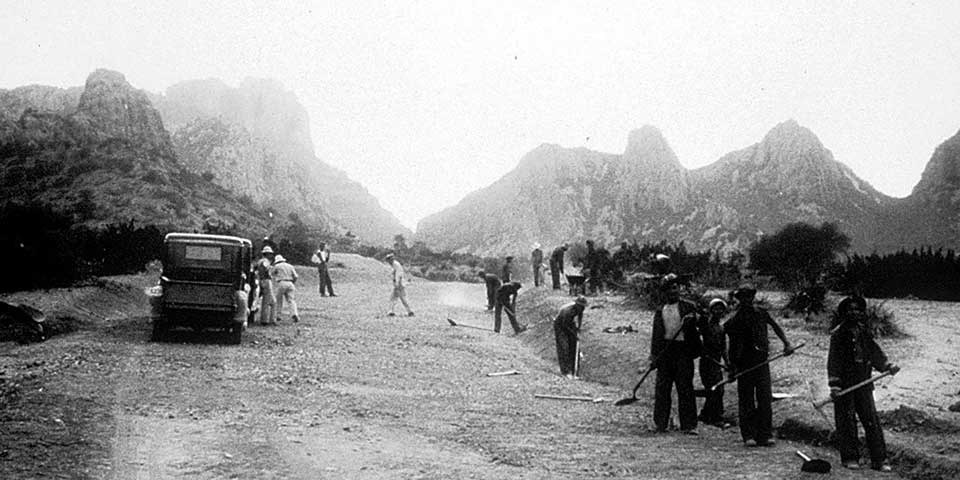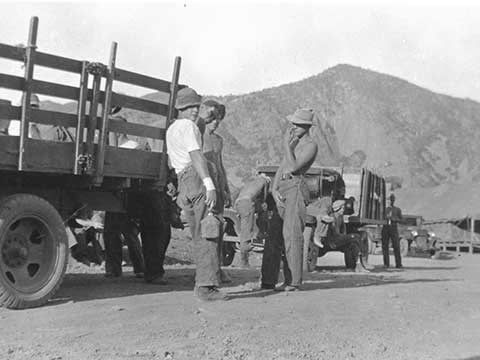Last updated: May 11, 2020
Article
The Legacy Of The Civilian Conservation Corps At Big Bend

NPS Collection
Picture it: A steamy summer morning in Big Bend. The year is 1934. Reveille has just sounded on a bugle, and a company of young men, already sweating from the heat in their tar paper huts, start to rise. They pull on their blue jean dungarees, load themselves into one-and-a-half ton trucks, and make the steep drive out of the Chisos Basin, stopping twice to pour water on the vehicles' struggling radiators.

NPS Collection
Building Hope...
Arriving at their destination in Green Gulch, they began their day of road building under the hot desert sun using only pickaxes and shovels. These young men grew up in the midst of the worst economic and man-made environmental disasters in American history and yet, here they were, building hope in the form of a park.
A decade of unchecked spending and a stock market crash along with generations of poor farming and deforestation practices left the 1930s with a wasted land and a wasted youth. In an effort to “heal the man, heal the land,” Franklin Roosevelt created the Civilian Conservation Corps. The idea was so popular that within two months, more than 250,000 unemployed men aged 18-25 were shipped around the country, a mobilization feat that has never been matched.
Workers received 30 dollars a month for their labor, 25 of which had to be sent back to help their families. It didn’t seem like much, but for the first time in their adult lives these young men had bellies filled with food and days filled with purpose.
...And A National Park
Big Bend National Park was one of the many benefactors of these young men. In 1934, Big Bend was a state park that was mostly inaccessible to the lay person. The Chisos Mountains were a four hour drive up a dirt road from Marathon and the primitive route up into the Basin could defeat even the most rugged of trucks. The very idea of having a CCC camp stationed in Big Bend was turned down by the Army twice because of the remote location. The locals, however, were persistent about the wonders of the area and even pitched in with digging to find a water source in the Basin that would support a camp. The Army finally relented and CCC Company 1855 arrived in 1934.
The incredible efforts of the CCC helped Big Bend gain national attention, eventually leading to the establishment of a national park in 1944. Every time we drive into the Basin, hike the Lost Mine Trail, or stay in one of the stone cottages we are experiencing their legacy. Nationwide the CCC was responsible for planting 3 billion trees, saving 20 million acres of soil from erosion, and creating facilities at hundreds of state and national parks.
As the war in Europe progressed, more and more funds were directed at national defense. The bombing of Pearl Harbor marked the end of an era. The CCC officially ended in June of 1942, but it sparked a generation of environmentalists and outdoor enthusiasts. Many of the men would go on to fight in WWII, serving with a renewed sense of pride in the country that they rebuilt.
Park Ranger Tracey Coe
